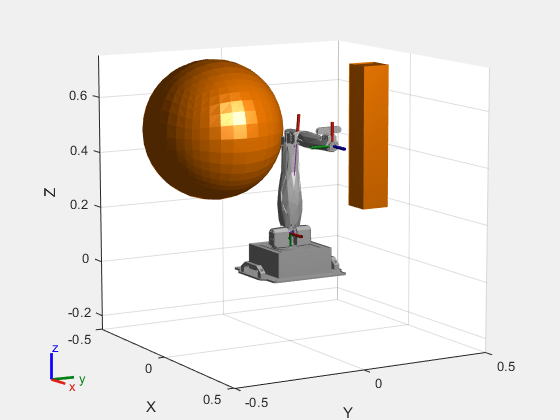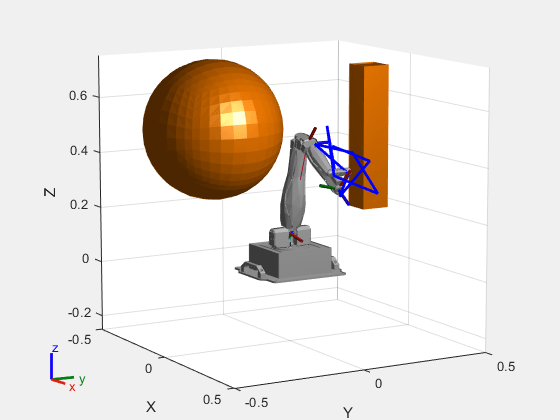manipulatorCollisionBodyValidator
Description
The manipulatorCollisionBodyValidator object performs state and motion validity
checks for a rigid body tree robot model. To check if the collision bodies collide either with
other bodies (self-collisions) or the environment, use the isStateValid
object function. To check if a motion between two states is valid, use the isMotionValid
object function.
This object requires Navigation Toolbox™.
Creation
Syntax
Description
manipSV = manipulatorCollisionBodyValidatormanipulatorStateSpace object.
manipSV = manipulatorCollisionBodyValidator(ss)manipulatorStateSpace object that represents a robot model state space and
contains collision bodies for rigid body elements. Specify ss as a
manipulatorStateSpace object.
manipSV = manipulatorCollisionBodyValidator(ss,Name=Value)
Properties
Object Functions
isStateValid | Check if state is valid |
isMotionValid | Check if path between states is valid |


